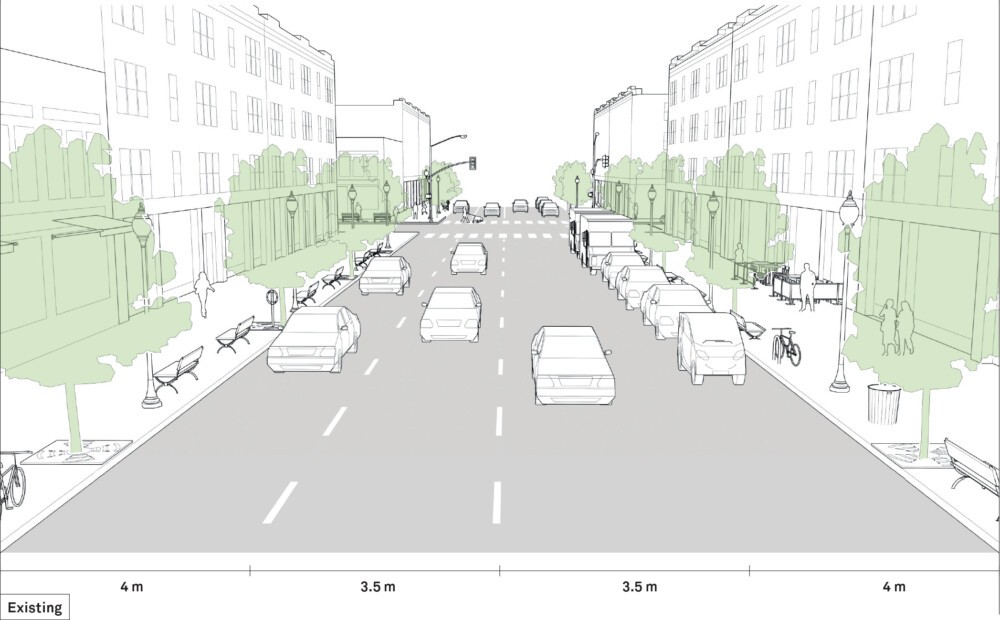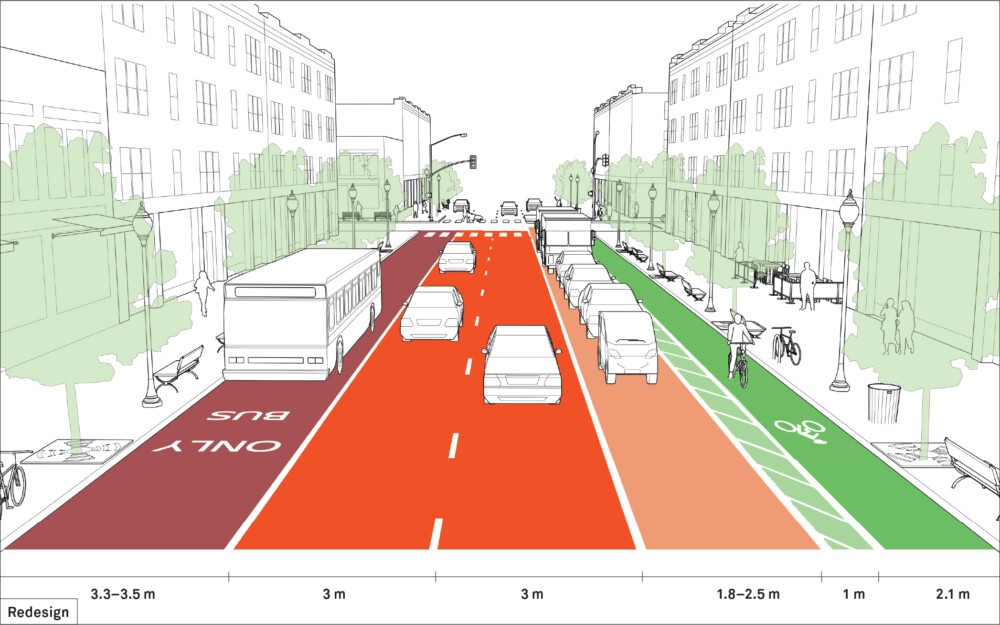

Highway lane width standards, when directly applied to urban environments, often lead to excessively wide and uniform lanes. These oversized lanes frequently underperform, contributing to speeding during off-peak hours and unsafe lane-splitting when traffic is heavy. Reducing Travel Lane width to 3 meters (approximately 9.8 feet) or less is a key strategy to encourage safer driving speeds and enhance overall street functionality in urban settings.
Understanding Travel Lane Width
Traditionally, wider travel lanes have been implemented to provide a greater sense of safety and comfort for drivers, particularly in high-speed environments. The rationale was that narrower lanes might feel restrictive and increase the risk of side-swipe accidents. Furthermore, it was commonly believed that lane widths less than 3.5 meters (approximately 11.5 feet) would negatively impact traffic flow and reduce road capacity. However, recent research is challenging these long-held assumptions, demonstrating that this is not necessarily the case in urban contexts.
For urban areas, a travel lane width of 3 meters is now considered highly appropriate. This dimension contributes positively to street safety without causing adverse effects on traffic operations. On routes designated for trucks or public transit, a slightly wider travel lane of 3.3 meters (approximately 10.8 feet) in each direction may be considered. In specific scenarios, even narrower travel lanes, ranging from 2.7 to 3 meters (approximately 8.9 to 9.8 feet), can be effectively used as through lanes, especially when combined with dedicated turn lanes. It is important to note that travel lanes wider than 3 meters are generally discouraged in urban areas. Excessively wide lanes can encourage unintended speeding, facilitate illegal double parking, and inefficiently consume valuable street space that could be better allocated to other modes of transportation or public amenities.
Policies that prioritize wide travel lanes are particularly unsuitable for dense urban environments where space is at a premium. Research has consistently indicated that narrower lane widths are effective in managing vehicle speeds without compromising safety. Conversely, wider lanes have not been shown to correlate with safer streets and can even be detrimental. Moreover, wider travel lanes increase pedestrian exposure and the distance pedestrians need to cross, potentially reducing pedestrian safety. Therefore, travel lane width should always be considered as an integral part of a holistic street design approach, taking into account all users and street functions.
Considerations for Multilane Roadways
On multilane roadways that accommodate transit buses or freight vehicles, the provision of one wider travel lane may be warranted to facilitate their movement. When implementing a wider lane, it should ideally be the outer lane, situated curbside or adjacent to a parking lane. Inner lanes in multilane configurations should adhere to the minimum recommended width of 3 meters or less to optimize space and manage speeds effectively.
Parking Lane Width Recommendations
For parking lanes, a width range of 1.8 to 2.5 meters (approximately 5.9 to 8.2 feet) is generally recommended. Cities are encouraged to clearly delineate parking lanes with markings or physical separators. This demarcation helps guide drivers in parking maneuvers and ensures they maintain a safe distance from parked vehicles, contributing to smoother traffic flow and reduced incidents of vehicle damage.
Footnotes
- Theo Petrisch, “The Truth about Lane Widths,” The Pedestrian and Bicycle Information Center, accessed June 6, 2016, http://www.pedbikeinfo.org/data/library/details.cfm?id=4348
- Ingrid Potts, Douglas W. Harwood, and Karen R. Richard, “Relationship of Lane Width to Safety on Urban and Suburban Arterials,” (paper presented at the TRB 86th Annual Meeting, Washington, DC, January 21–25, 2007): 1–6.
- Eric Dumbaugh and Wenhao Li, “Designing for the Safety of Pedestrians, Cyclists, and Motorists in Urban Environments.” Journal of the American Planning Association 77 (2011): 70.
- Kay Fitzpatrick, Paul Carlson, Marcus Brewer, and Mark Wooldridge, “Design Factors That Affect Driver Speed on Suburban Arterials,” Transportation Research Record: Journal of the Transportation Research Board 1751 (2000):18–25.
Adapted from the Global Street Design Guide, published by Island Press.